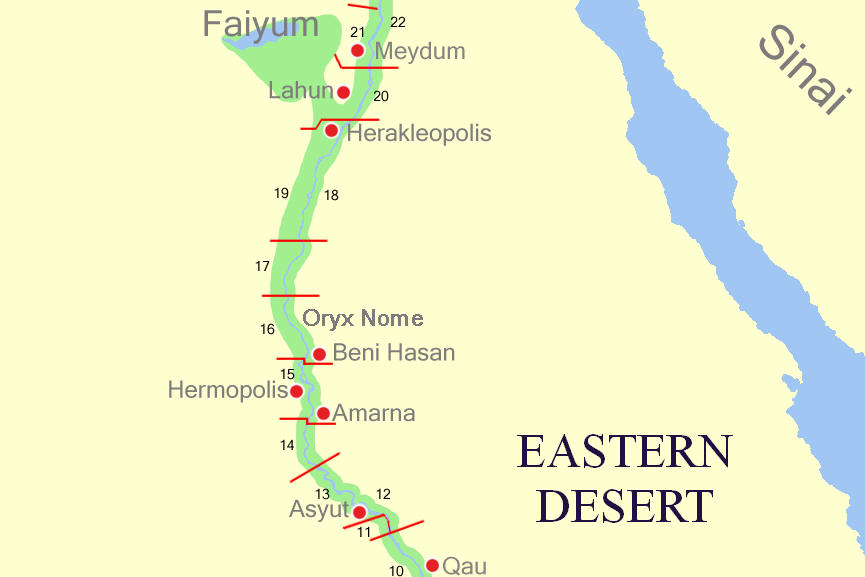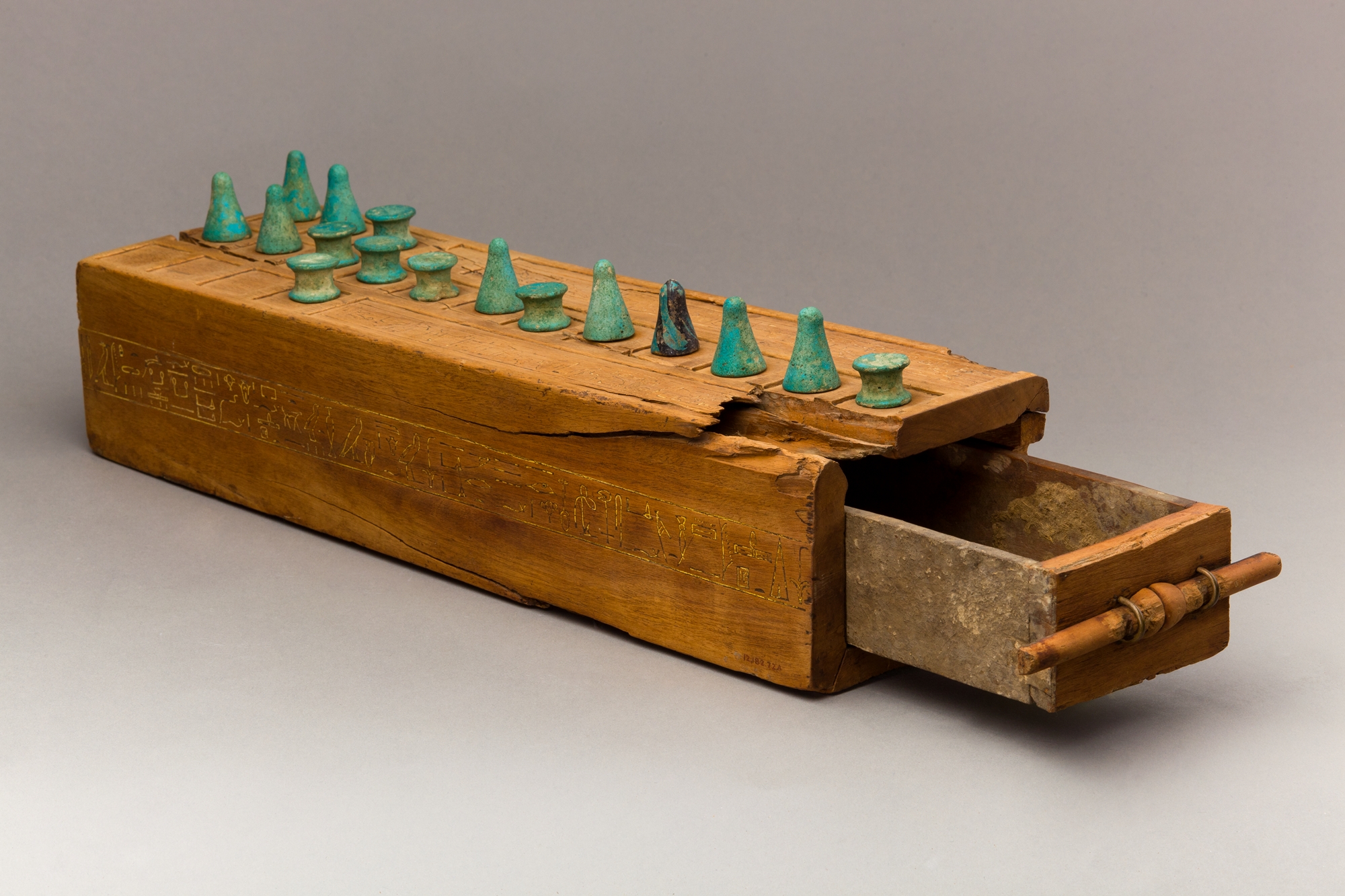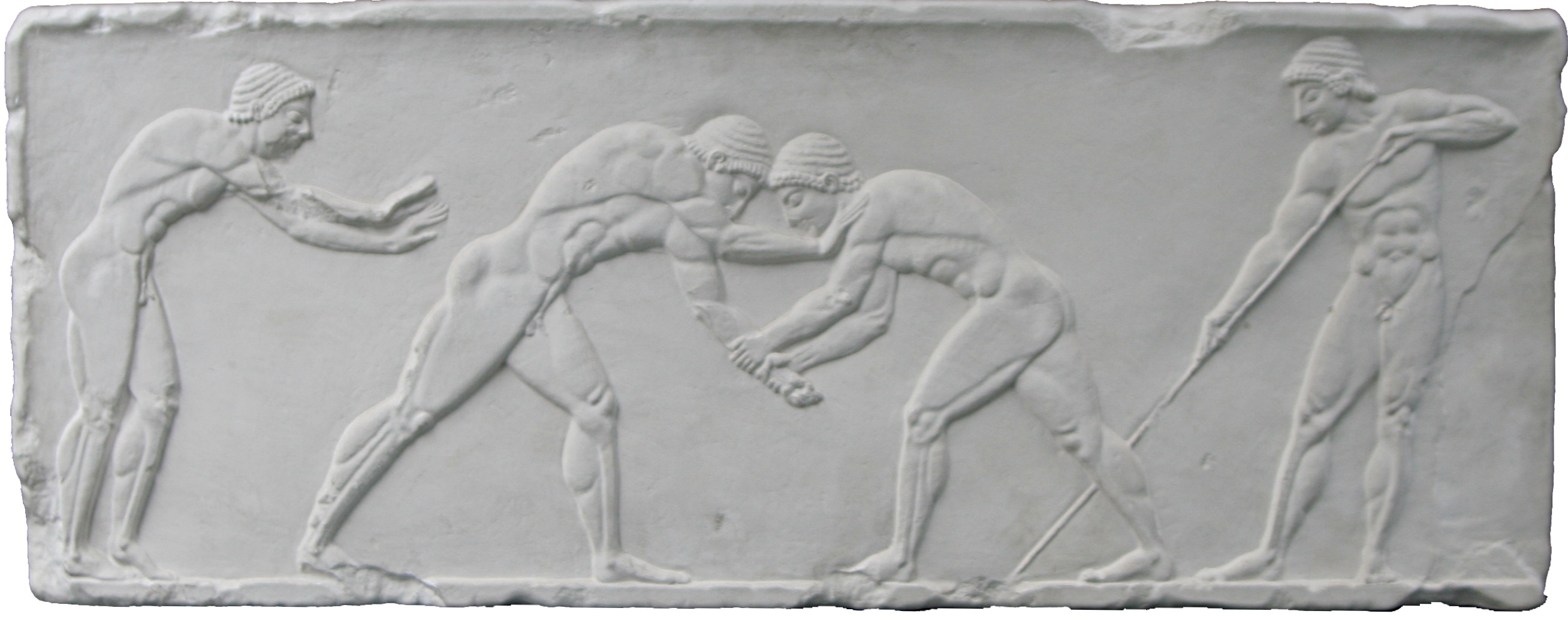|
Baqet III
Baqet III was an ancient Egyptian official and '' Great Chief of the Oryx nome'' (the 16th nome of Upper Egypt) during the 11th Dynasty in the 21st century BCE. Apart from the position of governor of the entire nome, Baqet III also held the titles ''haty-a'', ''treasurer of the king of Lower Egypt'', ''confidential friend'', ''true royal acquaintance'', and ''mayor of Nekheb''. As a son of his predecessor Ramushenti, he administered the governorate in the city of Men'at Khufu. Realizing that the fate of the civil war was definitely in favor of the Thebans led by Mentuhotep II, Baqet cunningly broke the long neutrality of his territory and took the Theban side. After his death, his new loyalty allowed him to be succeeded by his probable son Khety and by his descendants until the time of Amenemhat I, when a family turnover took place in the governorship with the installation of Khnumhotep I. The tomb BH15 Baqet III was buried in the necropolis of his clan in Beni Hasan inside th ... [...More Info...] [...Related Items...] OR: [Wikipedia] [Google] [Baidu] |
Ramushenti
Ramushenti was an ancient Egyptian local governor of the Oryx nome in Middle Egypt. He is only known from his decorated tomb chapel (BH 27) at Beni Hasan. In the decoration of his tomb chapel appear several inscriptions providing the name and titles of Ramushenti. He was '' great overlord of the Oryx nome''. This is the main title of the local governors. Other titles include ''count'' (Haty-a), ''royal sealer'', ''sole friend'', ''king's acquaintance'', ''who is in the chamber'', ''who belongs to Nekhen'' and ''overlord of Nekheb'',. Not much is known about his family. However, the parents of the local governor Baqet III (buried in BH 15) are a person called Ramushenti and a woman called Heteperau. The two Ramushentis might be the same person. According to this, Ramushenti was the father of Baqet III who was most likely his successor. The precise dating of Ramushenti is uncertain, but he most likely belongs to the 11th Dynasty The Eleventh Dynasty of ancient Egypt (notated Dyn ... [...More Info...] [...Related Items...] OR: [Wikipedia] [Google] [Baidu] |
Men'at Khufu
MinyaAlso spelled '' el...'' or ''al...'' ''...Menia, ...Minia'' or ''...Menya'' ( ar, المنيا ; ) is the capital of the Minya Governorate in Upper Egypt. It is located approximately south of Cairo on the western bank of the Nile River, which flows north through the city. Minya has one of the highest concentration of Coptic Christians in Egypt (approximately 50% of total population). It is the home city of the Minya University, Suzanne Mubarak Center for Arts, the new Minya Museum, and the regional North of Upper Egypt Radio and Television. Etymology The city's Arabic name comes from its Coptic one, rendered in as ⲧⲙⲱⲛⲏ in Bohairic and ⲧⲙⲟⲟⲛⲉ in Sahidic, which in turn comes from . The modern city of Minya is often identified with the Ancient Egyptian settlement of Men'at Khufu based on the resemblance of two names, although this claim, proposed by Gauthier and Drew-Bear, is denied by modern Egyptology as the former has a clear Greek etymology. ... [...More Info...] [...Related Items...] OR: [Wikipedia] [Google] [Baidu] |
Naguib Kanawati
Naguib Kanawati (born 1941) is an Egyptian Australian Egyptologist and Professor of Egyptology at Macquarie University in Sydney, New South Wales, Australia. Early life Kanawati was born in Alexandria, Egypt to a Melkite Greek Catholic family of Syro-Lebanese descent. Career A native of Alexandria, Egypt, he obtained a master's degree in business administration and later emigrated to Sydney, Australia, where he obtained his second Master's degree and Doctorate, both in Egyptology. He subsequently joined the academic staff of the university, as lecturer in History (1980–1983), and Associate Professor in Egyptology (1984–1990). From 1990, Kanawati became Macquarie University's first Professor in Egyptology and holds a Personal Chair in that subject. He was instrumental in the formation of the Rundle Foundation for Egyptian Archaeology in the late 1970s and was the founder, in 1989, of the Australian Centre for Egyptology, which coordinates all Australian excavations in ... [...More Info...] [...Related Items...] OR: [Wikipedia] [Google] [Baidu] |
Beni Hassan Tomb 15 Wrestling Detail
is a Japanese R&B singer, who debuted in 2004 under the Avex Trax label. In 2008, Arashiro left Avex Trax and transferred to Universal Music Japan where she started to perform as simply Beni (stylized as BENI). She was initially best known for her 2004 single "Here Alone," though later singles after her move to Universal (such as " Mō Ichi do..." with Dohzi-T, " Mō Nido to..." and " Kiss Kiss Kiss") have surpassed this initial hit. Life and career Start of her career Born in Okinawa, she moved to San Diego, California and then Yokohama. Her mother is Japanese and her father is American of European descent. She was influenced by Namie Amuro, Alicia Keys and her father's favorite singer Janet Jackson. She graduated from Nile C. Kinnick High School in Yokosuka Naval Base, Japan. She majored in Sociology at Sophia University. From a young age she wanted to become a singer and because of her musical parents she took up piano. Because her parents were living overseas she was t ... [...More Info...] [...Related Items...] OR: [Wikipedia] [Google] [Baidu] |
Senet
Senet or senat ( egy, znt, translation=passing; cf. Coptic language, Coptic ⲥⲓⲛⲉ /sinə/ "passing, afternoon") is a board game from ancient Egypt. The earliest representation of senet is dated to E from the Mastaba of Hesy-Re, while similar boards and hieroglyphic signs are found even earlier. The game fell out of use following the Egypt (Roman province), Roman period, and its original rules are the subject of conjecture. History Fragmentary boards that could be senet have been found in First dynasty of Egypt, First Dynasty burials in Egypt, E. The first unequivocal painting of this ancient game is from the Third Dynasty tomb of Hesy-Ra, Hesy (c. 2686–2613 BCE). People are depicted playing senet in a painting in the tomb of Rashepes, as well as from other tombs of the Fifth and Sixth Dynasties (c. 2500 BCE). The oldest intact senet boards date to the Middle Kingdom of Egypt, Middle Kingdom, but graffiti on Fifth Dynasty of Egypt, Fifth and Sixth Dynasty of Egypt, Six ... [...More Info...] [...Related Items...] OR: [Wikipedia] [Google] [Baidu] |
Wrestling
Wrestling is a series of combat sports involving grappling-type techniques such as clinch fighting, throws and takedowns, joint locks, pins and other grappling holds. Wrestling techniques have been incorporated into martial arts, combat sports and military systems. The sport can either be genuinely competitive or sportive entertainment (see professional wrestling). Wrestling comes in different forms such as freestyle, Greco-Roman, judo, sambo, folkstyle, catch, submission, sumo, pehlwani, shuai jiao and others. A wrestling bout is a physical competition, between two (sometimes more) competitors or sparring partners, who attempt to gain and maintain a superior position. There are a wide range of styles with varying rules, with both traditional historic and modern styles. The term ''wrestling'' is attested in late Old English, as ''wræstlunge'' (glossing ''palestram''). History Wrestling represents one of the oldest forms of combat. The origins of wrestl ... [...More Info...] [...Related Items...] OR: [Wikipedia] [Google] [Baidu] |
Sling (weapon)
A sling is a projectile weapon typically used to throw a blunt projectile such as a stone, clay, or lead " sling-bullet". It is also known as the shepherd's sling or slingshot (in British English). Someone who specializes in using slings is called a slinger. A sling has a small cradle or ''pouch'' in the middle of two retention cords. A projectile is placed in the pouch. There is a loop on the end of one side of the retention cords. Depending on the design of the sling, either the middle finger or the wrist is placed through a loop on the end of one cord, and a tab at the end of the other cord is placed between the thumb and forefinger. The sling is swung in an arc, and the tab released at a precise moment. This action releases the projectile to fly to the target. The sling is much more than merely an extension of a human arm. By its double-pendulum kinetics, the sling enables stones (or spears) to be thrown much further than they could be by hand alone. The sling is i ... [...More Info...] [...Related Items...] OR: [Wikipedia] [Google] [Baidu] |
Nubia
Nubia () (Nobiin: Nobīn, ) is a region along the Nile river encompassing the area between the first cataract of the Nile (just south of Aswan in southern Egypt) and the confluence of the Blue and White Niles (in Khartoum in central Sudan), or more strictly, Al Dabbah. It was the seat of one of the earliest civilizations of ancient Africa, the Kerma culture, which lasted from around 2500 BC until its conquest by the New Kingdom of Egypt under Pharaoh Thutmose I around 1500 BC, whose heirs ruled most of Nubia for the next 400 years. Nubia was home to several empires, most prominently the Kingdom of Kush, which conquered Egypt in the eighth century BC during the reign of Piye and ruled the country as its 25th Dynasty (to be replaced a century later by the native Egyptian 26th Dynasty). From the 3rd century BC to 3rd century AD, northern Nubia would be invaded and annexed to Egypt, ruled by the Greeks and Romans. This territory would be known in the Greco-Roman world as Dodekasc ... [...More Info...] [...Related Items...] OR: [Wikipedia] [Google] [Baidu] |
Khnumhotep I
Khnumhotep I (''ẖnmw-ḥtp, "Khnum is pleased"'') was an ancient Egyptian '' Great Chief of the Oryx nome'' (the 16th nome of Upper Egypt) during the reign of Pharaoh Amenemhat I of the 12th Dynasty, Middle Kingdom (early 20th century BCE). Tomb His tomb (no. 14) at Beni Hasan consists of a single rock cut offering chapel with two columns. The columns are gone by now. The walls of the chapel are painted although the paintings are today heavily faded. Within the chapel there are two shafts leading down to burial chambers, only one of them was finished.Lashien, Mouradː ''Beni Hassan, Volume V, The Tomb of Khnumhotep I'', p. 20-21 The west wall of the offering chapel, south of the entrance shows a long biographical inscription that is an important historical document. Under the inscription Khnumhotep I is shown on a boat hunting in the marshes.Lashien, Mouradː ''Beni Hassan, Volume V, The Tomb of Khnumhotep I'', pl. 67 North of the entrance on the same wall is a false door and ... [...More Info...] [...Related Items...] OR: [Wikipedia] [Google] [Baidu] |
Amenemhat I
:''See Amenemhat, for other individuals with this name.'' Amenemhat I ( Ancient Egyptian: ''Ỉmn-m-hꜣt'' meaning 'Amun is at the forefront'), also known as Amenemhet I, was a pharaoh of ancient Egypt and the first king of the Twelfth Dynasty of the Middle Kingdom. Amenemhat I was probably the same as the vizier named Amenemhat who led an expedition to Wadi Hammamat under his predecessor Mentuhotep IV, and possibly overthrew him from power. Scholars differ as to whether Mentuhotep IV was killed by Amenemhat I, but there is no independent evidence to suggest this and there may even have been a period of co-regency between their reigns.E. Hornung, ''History of Ancient Egypt'', 1999 p.50 Amenemhat I was not of royal lineage, born to Senusret and Nefert who were possibly related to the nomarchial family of Elephantine. The composition of some literary works (the ''Prophecy of Neferti'', the ''Instructions of Amenemhat''M. Lichtheim, ''Ancient Egyptian Literature'', 1973 p.135) ... [...More Info...] [...Related Items...] OR: [Wikipedia] [Google] [Baidu] |
Thebes, Egypt
, image = Decorated pillars of the temple at Karnac, Thebes, Egypt. Co Wellcome V0049316.jpg , alt = , caption = Pillars of the Great Hypostyle Hall, in ''The Holy Land, Syria, Idumea, Arabia, Egypt, and Nubia'' , map_type = Egypt , map_alt = , map_size = , relief = yes , coordinates = , location = Luxor, Luxor Governorate, Egypt , region = Upper Egypt , type = Settlement , part_of = , length = , width = , area = , height = , builder = , material = , built = , abandoned = , epochs = , cultures = , dependency_of = , occupants = , event = , excavations = , archaeologists = , condition = , ownership = , management = , public_access = , website = , notes = , designation1 = WHS , designation1_offname = Ancient Th ... [...More Info...] [...Related Items...] OR: [Wikipedia] [Google] [Baidu] |
Nekheb
El Kab (or better Elkab) is an Upper Egyptian site on the east bank of the Nile at the mouth of the Wadi Hillal about south of Luxor (ancient Thebes). El Kab was called Nekheb in the Egyptian language ( , Late Coptic: ), a name that refers to Nekhbet, the goddess depicted as a white vulture.Limme, Luc. "Elkab, 1937–2007: Seventy Years of Belgian Archaeological Research." British Museum Studies in Ancient Egypt and Sudan (2008): 15-50. The British Museum. Web. 24 Oct. 2012. . In Greek it was called Eileithyias polis, "city of the goddess Eileithyia". El Kab consists of prehistoric and ancient Egyptian settlements, rock-cut tombs of the early Eighteenth Dynasty (1550–1295 BC), remains of temples dating from the Early Dynastic period (3100–2686 BC) to the Ptolemaic Kingdom (332–30 BC), as well as part of the walls of a Coptic monastery. This site was first scientifically excavated by James Quibell at the end of the nineteenth century, but other archaeologists have sp ... [...More Info...] [...Related Items...] OR: [Wikipedia] [Google] [Baidu] |








_-_TIMEA.jpg)
